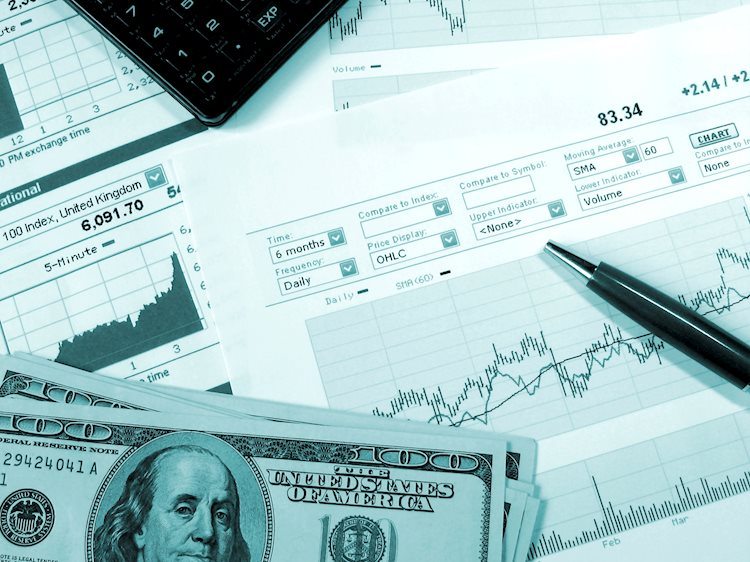- US Dollar continues losing ground in light of weak CPI figures and UoM data.
- Markets still foresee a September rate cut.
- Despite hot PPI data, US Treasury yields are falling, diminishing allure of USD.
The US Dollar Index (DXY) remains weak on Friday, sitting at April lows. This is largely a response to the soft US Consumer Price Index (CPI) figures on Thursday, combined with softer University of Michigan (UoM) sentiment data, both supporting the prospect of a Federal Reserve (Fed) rate cut in September.
Although the market’s confidence in a pending rate cut is growing, Fed officials have maintained a careful approach, emphasizing their dependence on rigorous data analysis before initiating such substantial changes.
Daily digest market movers: DXY wanes despite rising PPI
- US Producer Price Index (PPI) for final demand rose to 2.6% YoY in June, an increase from 2.2% last month, as revealed by the US Bureau of Labor Statistics (BLS) on Friday. This outcome exceeded market expectations of 2.3%.
- Annual core PPI increased by 3% during the same period, surpassing both the previous month’s rise and the anticipated market figure of 2.3%.
- On a monthly basis, PPI and core PPI escalated by 0.2% and 0.4%, respectively.
- Despite positive PPI data, soft CPI figures and softer UoM sentiment data (reported at 66.0 versus the forecast of 68.5 and the previous value of 68.2) continue to bolster the argument for a September rate cut.
- CME FedWatch Tool now shows an 86% probability of a 25-basis-point cut in September, and some investors bet on a 50-basis-point cut
DXY technical outlook: Bearish sentiment worsens as DXY breaches 200-day SMA
The DXY Index’s breach of its 200-day Simple Moving Average (SMA) has intensified the negative outlook for the USD, with indicators including the Relative Strength Index (RSI) and the Moving Average Convergence Divergence (MACD) still deep in a negative trajectory.
The index now trades at its lowest level since April, amplifying the bearish sentiment. But after losing more than 0.80% in just two sessions, a slight upward correction may be possible. However, the overall technical outlook remains bearish.
Fed FAQs
Monetary policy in the US is shaped by the Federal Reserve (Fed). The Fed has two mandates: to achieve price stability and foster full employment. Its primary tool to achieve these goals is by adjusting interest rates. When prices are rising too quickly and inflation is above the Fed’s 2% target, it raises interest rates, increasing borrowing costs throughout the economy. This results in a stronger US Dollar (USD) as it makes the US a more attractive place for international investors to park their money. When inflation falls below 2% or the Unemployment Rate is too high, the Fed may lower interest rates to encourage borrowing, which weighs on the Greenback.
The Federal Reserve (Fed) holds eight policy meetings a year, where the Federal Open Market Committee (FOMC) assesses economic conditions and makes monetary policy decisions. The FOMC is attended by twelve Fed officials – the seven members of the Board of Governors, the president of the Federal Reserve Bank of New York, and four of the remaining eleven regional Reserve Bank presidents, who serve one-year terms on a rotating basis.
In extreme situations, the Federal Reserve may resort to a policy named Quantitative Easing (QE). QE is the process by which the Fed substantially increases the flow of credit in a stuck financial system. It is a non-standard policy measure used during crises or when inflation is extremely low. It was the Fed’s weapon of choice during the Great Financial Crisis in 2008. It involves the Fed printing more Dollars and using them to buy high grade bonds from financial institutions. QE usually weakens the US Dollar.
Quantitative tightening (QT) is the reverse process of QE, whereby the Federal Reserve stops buying bonds from financial institutions and does not reinvest the principal from the bonds it holds maturing, to purchase new bonds. It is usually positive for the value of the US Dollar.
